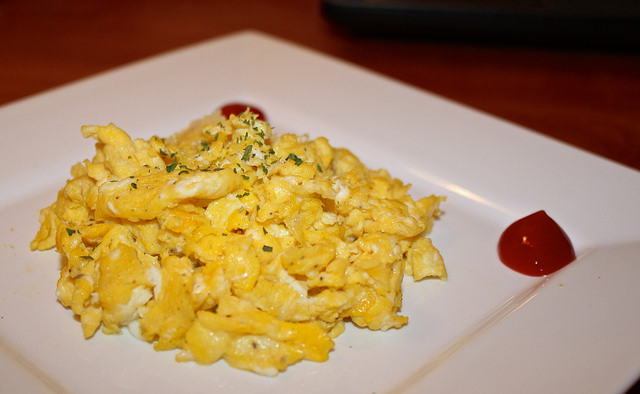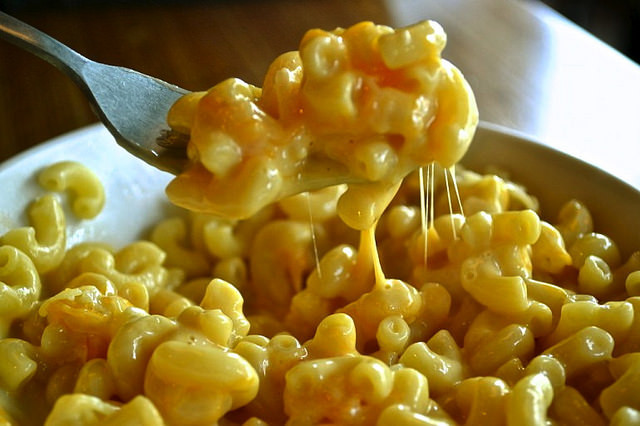International students have to consider many things before actually reaching the foreign land of the United States. They dread spending Lunar New Year taking classes and doing homework while their families enjoy a week’s worth of New Year’s festivities.
They need to tread carefully into an unfamiliar new culture and most of them, unfortunately, fail to anticipate something much more serious: adjusting to a completely different assortment of cuisines. Welcome to America. Welcome to the new, odd, and strange world of many unknown traps and savory dishes.
My mother, affectionate and caring, has always said that I would have no problem with food when I reached the United States, since I had a penchant for “Western” dishes. Three years later, she saw me leaving for the land of opportunity, dragging a huge bag filled with Korean-style hot instant noodles, grandmother’s extra-spicy gochujang (a Korean soybean paste), and tea bags.
Both my mother and I failed to consider that the Western foods I knew and liked were only the tip of the glacier. Three food shocks I faced on my journey through the world of American fine dining were:

Photo by Ying Ting Hu
1. Eggs, Eggs, Eggs
During my freshman year, I lived in Mountainview, a dormitory seated gingerly upon a hill looking down on our university’s campus. It was then that this “fresh-off-the-plane” student from Asia became acquainted with American cuisine.
During this time, I came to love and hate breakfast. Scrambled eggs were never absent from the menu at campus dining halls. Never. Born and raised where my breakfast choices were not set with the exception of rice, I found this perpetual presence of eggs, often scrambled, as odd.
“Why do you love eggs so much?” was my unspoken and unanswered question. I simply opted to close the case with a label of “cultural difference”. One way or another, scrambled or as an omelette, eggs slowly made their way onto my breakfast table.

Photo by Ying Ting Hu
2. Cherry Coke and Strawberry Ice Cream Float
The second shock came from my trek into the College in the Woods’ dining hall, where I encountered the “float”. At first, the word “float” looked out of place. While my mental English dictionary offered a literal meaning, my common sense suggested that it must have been edible because it appeared on the screen of C.I.W.’s late night ordering kiosk.
Confused, I asked my roommate what a float was. She answered that it was a drink topped with ice cream. My spirit of culinary adventure was sparked. It was something that I had never heard before, and so, I had to try it. “Wasn’t trying new things an essential part of studying abroad?” I asked myself. However, a sip was all it took to dampen my sparkling curiosity.
The artificial flavor from the Cherry Coke tasted oddly heavy, deprived of a natural sweetness that the real fruit offers. The strawberry ice cream, which topped the soda, was also not a good match. The soda quickly mixed with the ice cream’s melting edges, creating a ring of tasteless bubbles. After such a food shock, my spirit of culinary adventure was, for some time, limited to foods that I had heard of at least once.

Photo by Kirby Barth
3. Macaroni and Cheese
My first impression of mac ‘n’ cheese was quite far from fantastical. It was a yellow-ish … something. A closer look revealed a couple of very obvious ingredients: cheese, cheese, and more cheese. I did identify macaroni, but I refused to believe it. For me, these small, curly tubes of pasta were native to salads; what were they doing lost in a dish so outrageously unfit for weight loss?
Although mac ‘n’ cheese has indeed invaded Korea, I had no exposure to it until I discovered it here. It was odd. Yet, there it stood, far and distinct from the surrounding healthy greens and Meatless Monday entrees, but nonetheless popular and proud.
My college culinary journey has differed from that of most students in that many of their routine dishes were strange and new to me. However, despite having my fair share of shocks, I’ve also found many pleasures.
The refreshingly sweet key lime pie from the Appalachian Dining Hall, creamy whoopie pie from Jazzman’s, and the vegetarian burger from C.I.W. were all wonderful firsts for me. I’ve also learned to enjoy meals without a bowl of rice, while having forgotten how to enjoy fast food that is not from Chipotle.
Hence, for me, studying abroad has certainly been an opportunity to learn, not just about language and culture, but about the food as well.

